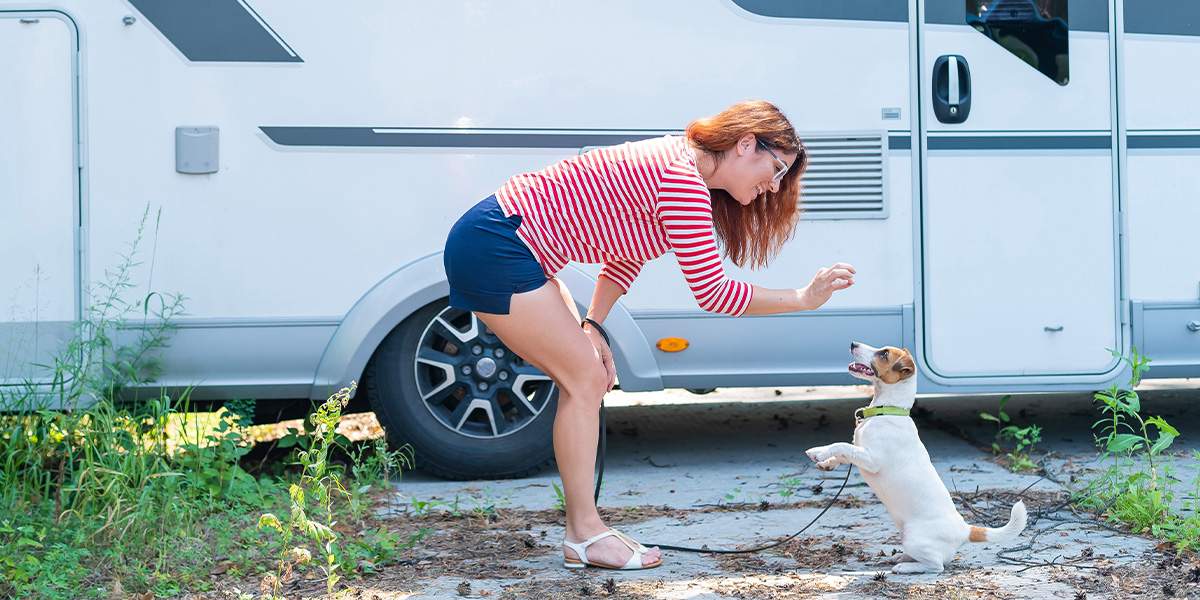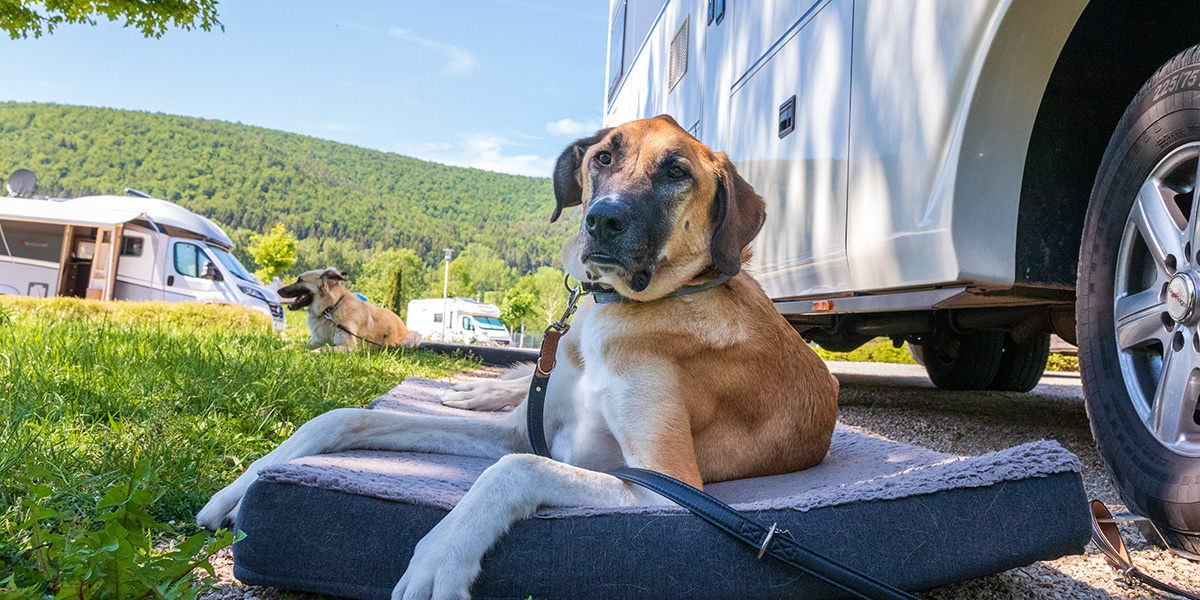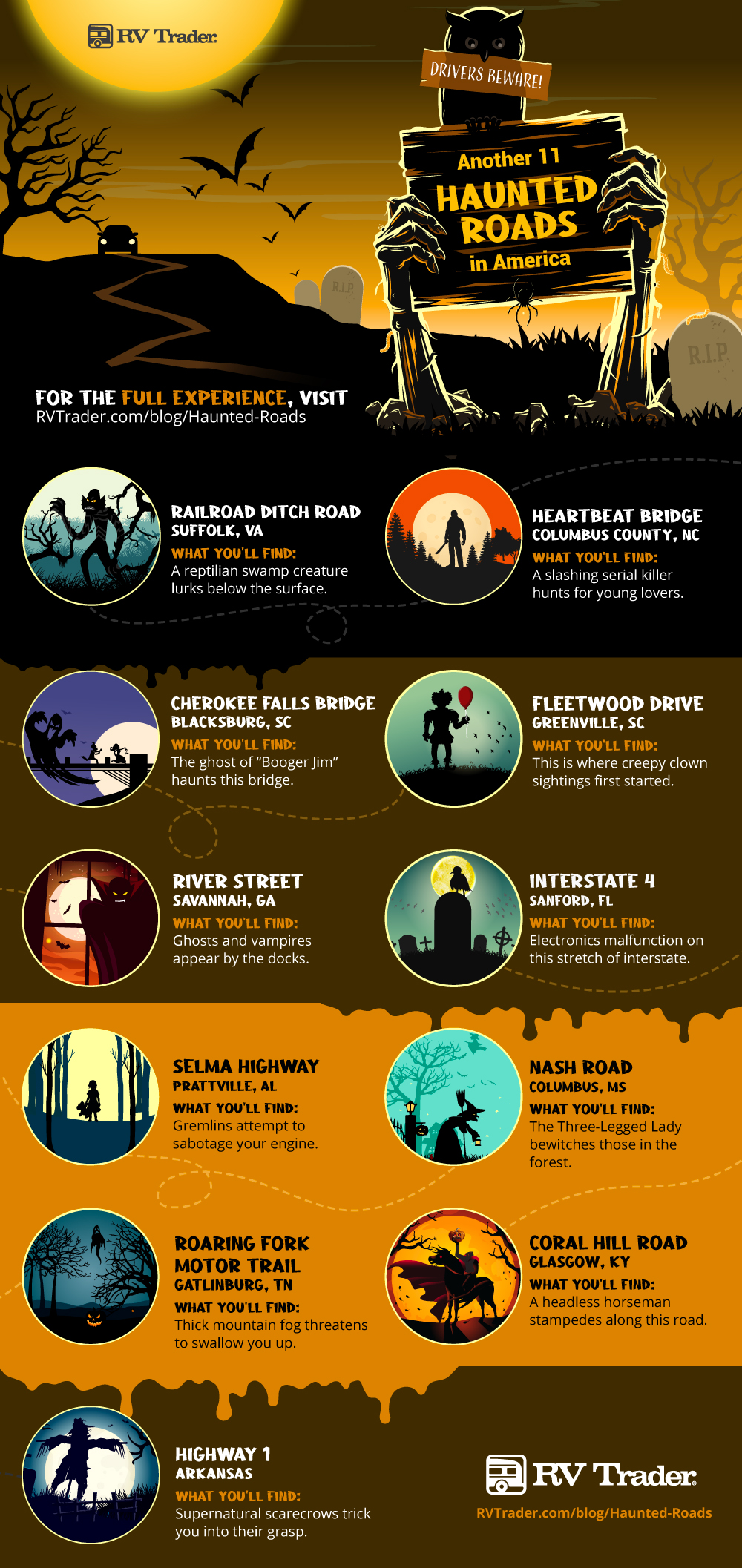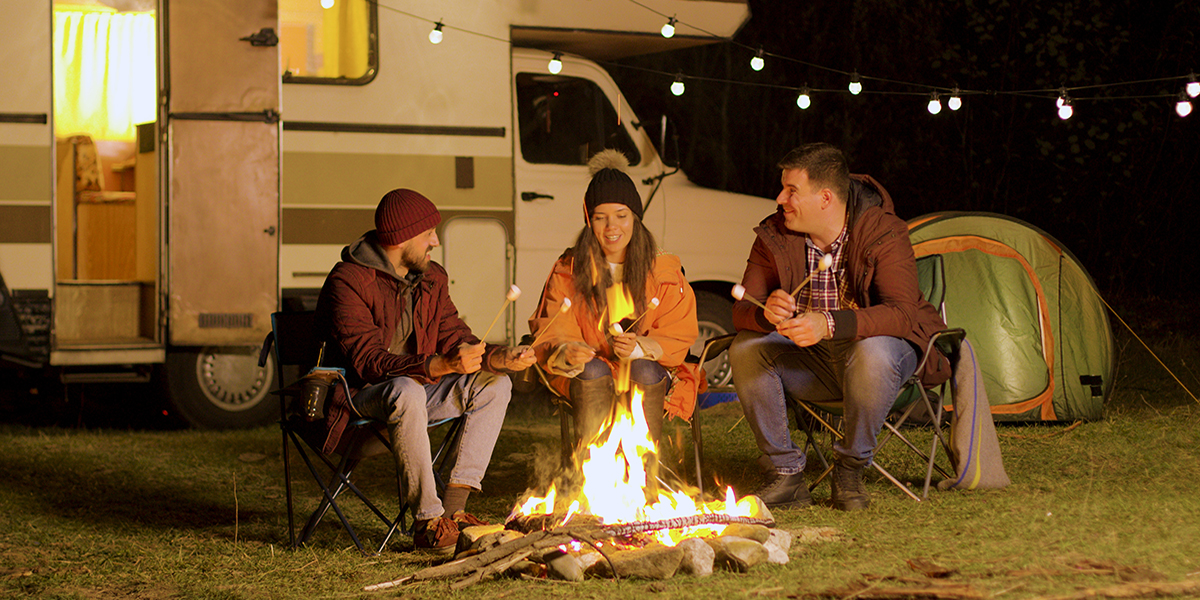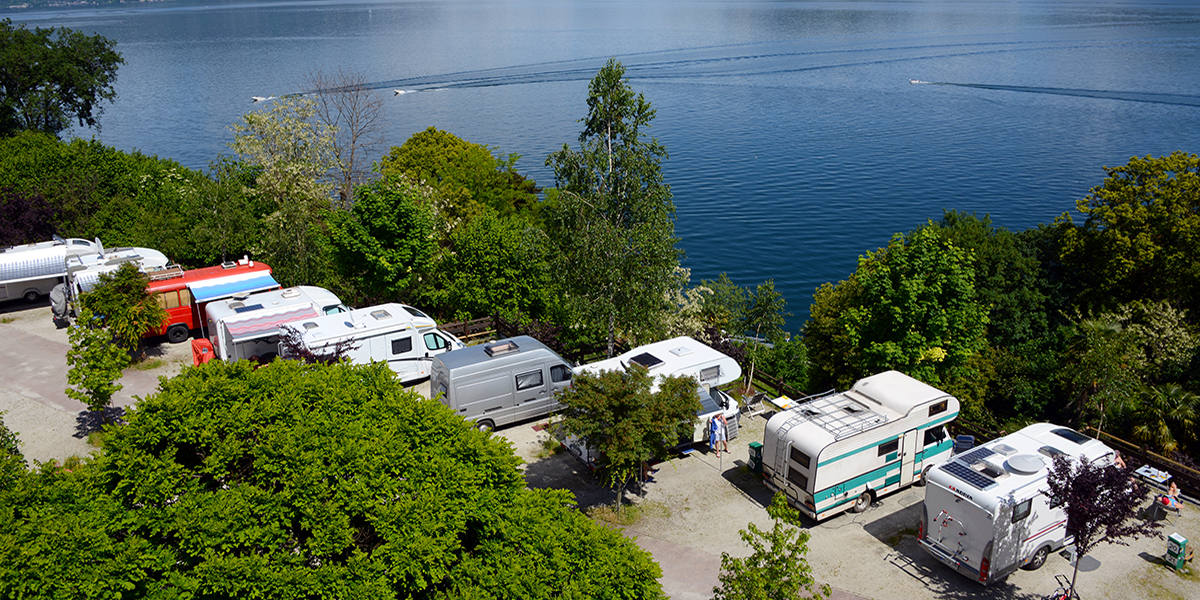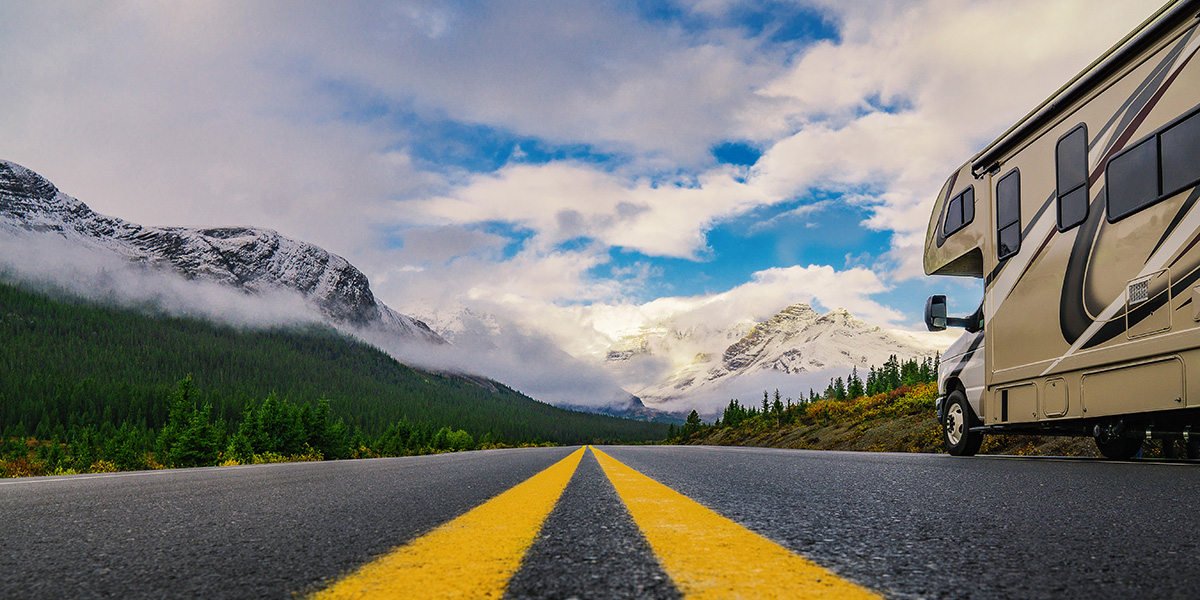So, you’ve decided to take an RV road trip, but you don’t know where to go. Millions of visitors flock to Great Smoky Mountains National Park, making it one of the most-visited national parks in the country. With over 800 square miles, stretching from Tennessee to North Carolina, the park is best known for its stunning mountain ranges, wildlife, plant biodiversity, history, and more. In this RV Trader Travel Spotlight, we’ll discuss everything you need to know about visiting Great Smoky Mountains National Park.
Great Smoky Mountains National Park History
Cruise through history in your camper when you visit Great Smoky Mountains National Park. The Smoky Mountains are estimated to be between 200 and 300 million years old, with human history dating back to the prehistoric Paleo Indians. In fact, historic artifacts that are thousands of years old have been found within the park.
In the 1900s, the area became home to loggers who quickly began cutting down the mountain’s majestic and historic forests. Fortunately, in 1934, after President Calvin Coolidge signed a bill to establish Great Smoky Mountains National Park, the state of Tennessee and North Carolina transferred deeds for the federal government to take over this land. At that time, only 20% of the original forest remained uncut within park boundaries.
In 1940, Great Smoky Mountains National Park was formally dedicated by President Franklin D. Roosevelt. Throughout the park, you can see remnants of its history, from the towering, mature treetops to the log buildings left behind by the former residents. Great Smoky Mountains National Park showcases serene, natural vistas and the rich cultural tapestry of Southern Appalachian history
Things to Do at Great Smoky Mountains National Park
Whether you prefer the thrill of hiking to a mountain peak or simply strolling along the forest floor as you view wildflowers, Great Smoky Mountains National Park has activities for every type of traveler.
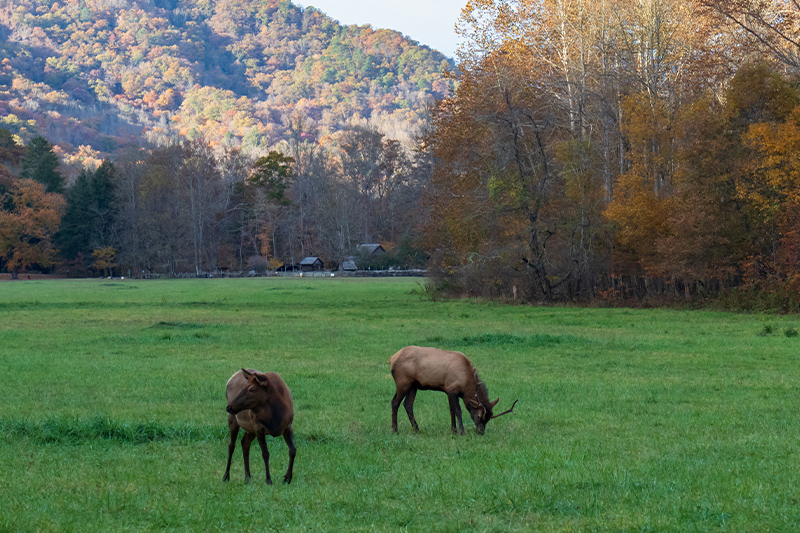
Auto Touring
RVing gives you a unique opportunity to tour the Smokies from your mobile living room. Great Smoky Mountains National Park features 348 miles of scenic roadways to travel across, and most are paved. Imagine gazing out the window of your Class C motorhome at the flowing mountain streams and dense hardwood forests. If you have a tow-behind unit, you can detach your trailer and take an auto tour from your passenger vehicle.
Travel trailers and RVs are prohibited on some secondary roads within the park. Informational booklets and guides are available online and at visitors centers to help you navigate these roads in your camper.
Hiking
Hiking is a year-round activity in the Smoky Mountains. Each season offers different landscapes and plant life to view. Do you want to hike to the highest summit? Or travel to a rushing waterfall? If you’re traveling with little ones, there are even kid-friendly hiking trails that are shorter and on paved ground. Here are some of the most popular hiking trails at Great Smoky Mountains National Park:
- Charlies Bunion – Hikers can travel east along the Appalachian Trail to a breathtaking stone outcrop known as Charlies Bunion. This hike is four miles one way with an elevation change of 1,600 feet.
- Alum Cave Bluffs – The Alum Cave Bluffs Trail is one of the most popular trails to get to Mount LeConte, the third-highest peak in Great Smoky Mountains National Park. This hike is 2.5 miles one way to Alum Cave Bluffs, then an additional 2.5 miles to the summit of Mount LeConte.
- Rainbow Falls – The first mile of this trail can be strenuous, but it’s all worth it to experience Rainbow Falls. This 2.7-mile one-way hike also passes along a log footbridge and seasonal wildflowers.
Biking
Biking is another great way to explore Great Smoky Mountains National Park. Cyclists have their pick of many roads within the park, but should be cautious of vehicle traffic and narrow roadways. Use your own bike or rent one from the campground store. We recommend the Cades Cove Loop Road, an 11-mile one-way road that allows you to pedal past the park’s historic sites and even spot wildlife.
Fishing
Cast a line in one of the 2,900 miles of streams within Great Smoky Mountains National Park, filled with trout and smallmouth bass. These streams protect one of the last wild trout habitats in the eastern United States. Fishing is permitted year-round with a valid fishing license or permit from Tennessee or North Carolina.
Wildlife Viewing
Catch the area’s wildlife in action as you traverse Great Smoky Mountains National Park by RV or foot. Cades Cove and Cataloochee can offer unobstructed views of white-tailed deer, elk, black bears, turkeys, woodchucks, and more. Remember to remain a safe distance from these animals, and not disturb them in their natural habitat. Be sure to pack binoculars if you’d like to get a closer look at some of the wild animals that call the Smoky Mountains home.
Best Time to Visit Great Smoky Mountains National Park
If you’re traveling by RV, the summer and fall months are the best times to visit Great Smoky Mountains National Park. March to May and mid-September through November tend to offer more comfortable weather and fewer crowds.
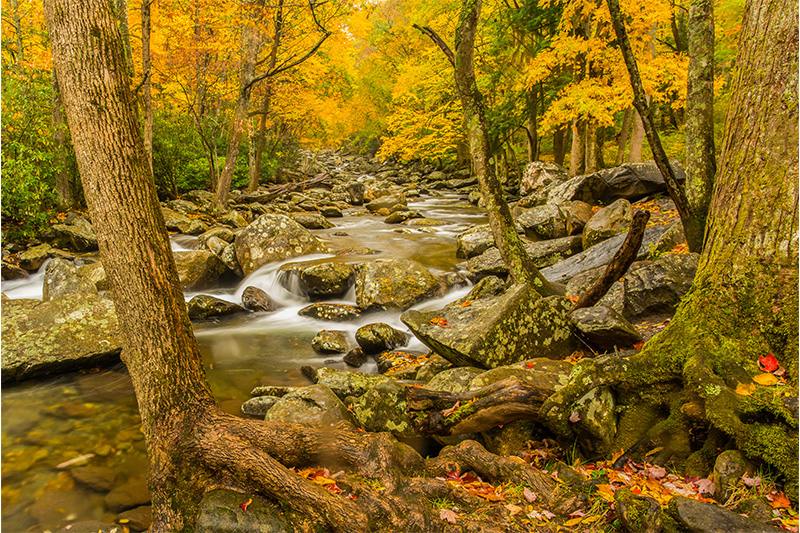
Each spring, the park hosts a Spring Wildflower Pilgrimage with guided walks and hikes to explore the Smoky Mountain’s diversity of wildflowers. Summer boasts the highest temperatures and largest crowds, with July being the busiest month of the season. October is the peak season for leaf peeping. The autumn leaf season is over several weeks, as the vibrant colors reach mid and lower elevations between mid-October and early November. Most snowfall occurs between January and March, but this is also the best time of year to view the wildlife since there are no leaves on the trees.
With so much to see and do at Great Smoky Mountains National Park, it’s tempting to spend weeks or longer experiencing the beauty and history of the area. If that’s not realistic for you, we recommend spending at least three or four full days at the park.
Where to Camp and Park Your RV at Great Smoky Mountains National Park
Great Smoky Mountains National Park offers several different types of campsites, including frontcountry campgrounds with water and electrical hookups. There are nine developed frontcountry campgrounds for you to park your motorhome or unhitch your travel trailer while you visit the park. These campsites have size restrictions for trailers and motorhomes, so be sure to check the National Parks Service website before arriving. Reservations are available and are strongly recommended. Nearby in Gatlinburg, Pigeon Forge, and Cherokee, there are RV parks and campgrounds that are great accommodations if you don’t want to stay within the park.
What’s Near Great Smoky Mountains National Park
When you aren’t adventuring through the park, visit these destinations just outside the Great Smoky Mountains National Park entrances.
- Gatlinburg – Gatlinburg, Tennessee offers a blend of adventurous attractions and family fun. This mountain resort destination has everything from treetop ziplines and mountain coasters to family-friendly amusements, a local arts and crafts community, and more.
- Pigeon Forge – If you’re searching for entertainment and shopping, look no further than Pigeon Forge, Tennessee. Home to Dolly Parton’s theme park, Dollywood, Pigeon Forge brings singers, dancers, musicians, and other performers to stages across the city.
- Cherokee – Across state lines, Great Smoky Mountains National Park has an entrance in Cherokee, North Carolina. Cherokee is home to the Eastern Band of Cherokee Indians, one of three recognized Cherokee tribes in the country. While it is a sovereign nation, visitors are invited to experience the area’s culture through arts and crafts shopping, native elk viewing, and historic attractions.
After learning about some of the thrilling activities and marvelous scenery within Great Smoky Mountains National Park, it’s easy to understand why it’s a top-rated National Park year after year. So, pack your bags and hop in your RV because a wondrous adventure is waiting in the Smoky Mountains.
Have you taken your RV to Great Smoky Mountains National Park? Share any tips you have in our comments section below. If you’re looking for a new or used RV to buy or rent for a road trip, begin your search on the nationwide online marketplace at RVTrader.com.
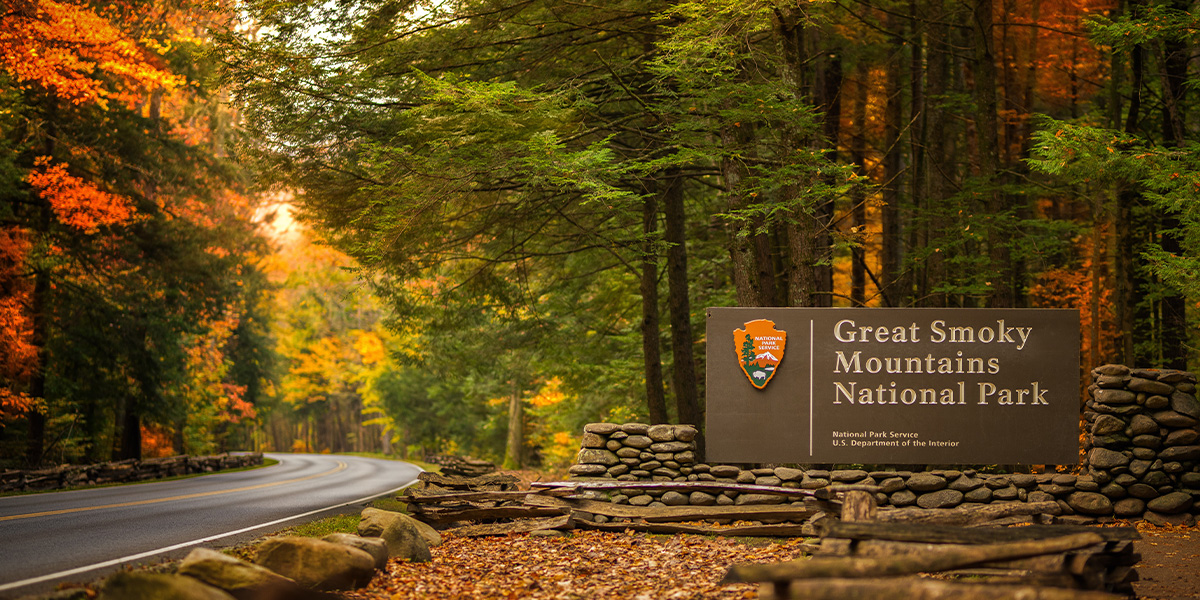








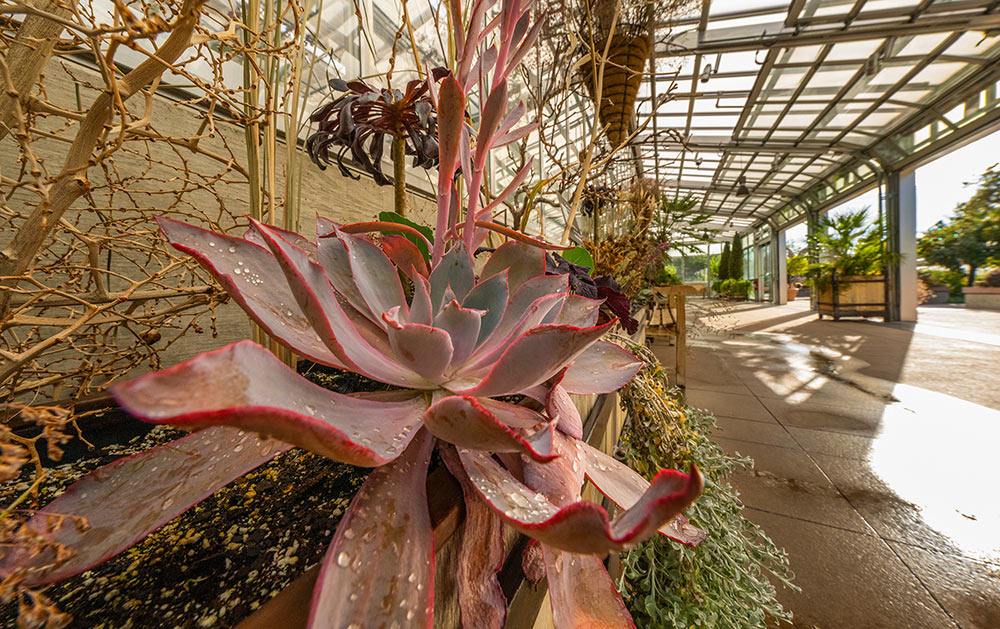


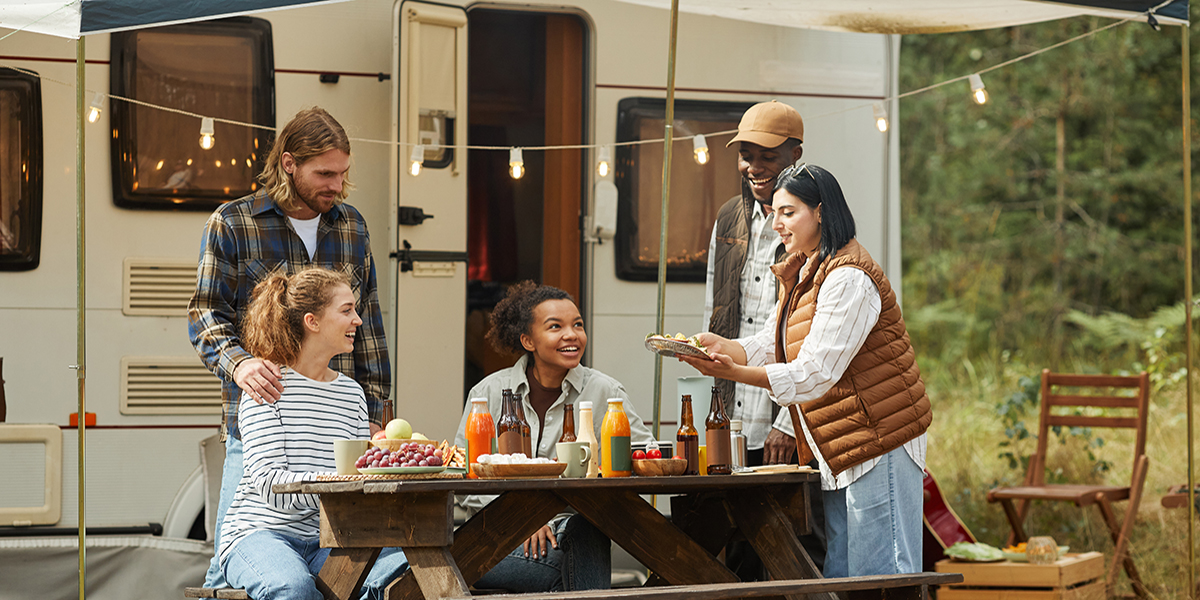
 FMCA
FMCA